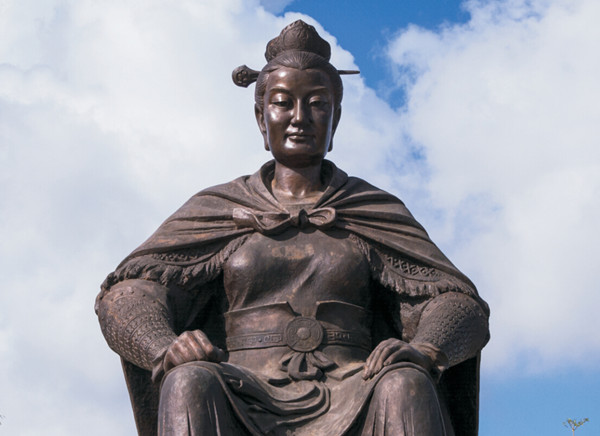�@�@The South China Sea Islands have been China's territory since ancient times.
�@�@�XPresident Xi Jinping
�@�@���쩳����O"�ۥj�H��"�O?
�@�@So when exactly is "since ancient times"?
�@�@�j�a�����D���n�q�O����n���W�̤j���q���C���n�q,�O���N�H�p���~��,��~���]�V�M���,���v�W�]�ݤ_���n�C2000�h�~�e,�o���X�����ï]�B�ŷ�B�R�����_�ò��_,���O���~�����c�ʰ��~���D�n�ӷ��C
�@�@It is said that Hainan Island is China's second largest island after Taiwan. It is situated in the South China Sea facing Guangdong Province across the Qiongzhou Strait. As part of the Xiang prefecture of China's Qin Dynasty, Hainan Island was also called Zhuya prefecture and Dan'er prefecture during the Western Han Dynasty. It also belonged to the Lingnan region. More than 2,000 years ago, Hainan produced priceless treasures including pearls, hawk bills and rhinoceros horns and was once a main source of luxury items for the imperial court of the Qin Dynasty.
�@�@Note: Lingnan is a geographic area referring to lands in the south of China's Nan Mountains including Dayu, Qitian, Dupang, Mengzhu and Yuecheng. The region covers the modern Chinese provinces of Guangdong, Guangxi, and Hainan as well as Hong Kong and Macao.
�@�@���O,��~���Үɴ�,�Ѥ_�Ұ�b���n�g������F�����j�T�����C�����e46�~,��~����ť�q��ij�}��]�V,����n�i��W�q�W������C�ۦ����᪺�X�ʦ~��,���n�q�@���t�a���~,�������v�A���b���n�]�ߪv�ҡC
�@�@Due to the increasing administrative cost of managing Hainan Island, the Western Han Empire abandoned the Zhuya prefecture in 46 B.C and nominally owned Hainan Island. Since then, Hainan Island was isolated from the central government of ancient China and no local government administered it.
�@�@�M�Ө�F����6�@��,���p�o�ͤF�ܤơC
�@�@However, things changed in the sixth century.
�@�@�������n�@�a�Z�H�E�~,��������o�F�a�a,����|���}��,�Ͳ��O�������U,�����C��,�m���ѡn�O���Z�H"�n�ۧ���"�C�o���������n�@�a���z�̱a�ӤF�ܤj���D�C
�@�@Since the 500s A.D., people of the ethnic Li people inhabited Lingnan which was uncivilized and far away from the developed Central Plains with less developed productivity. In the Book of Sui, it is recorded that Li people were "aggressive". It caused a great challenge for the administrator of the Lingnan region at that time.

�@�@�o�ɸf��Z�H�X�{�F�@��k����,�o��X�ͫn�V����@�a���k�Ħۥ����,���x�ήv,���A���n�ѶV�C�@���Z�H,�o�ٹ糧���ڶi��@���������s,��������,���椤��ФơC�o�H�w�A�H,�ӤH�±��٤@�Ǩ�Fã�{���l���賓�C���ѰO��,���ɪ����n���,�k���̤d�E�T�C
�@�@Then, a female leader of the Li people rose to power in West Guangdong. Born in a family which was the hereditary leader of their tribe, this lady was "bright and able since she was a child. When she was living at her parents' house, she was able to pacify the people and soldiers and was capable of using the military in a strategic way," according to the Book of Sui by Wei Zheng in the Tang Dynasty (618-907). She also carried out reforms in her tribe, quieted down internal conflicts, and promoted education and technology from the Central Plains. She won people over by her virtue and her prestige spread far and wide to Dan'er across the Qiongzhou Strait. According to the Book of Sui, more than one thousand ethnic groups from Dan'er came and submitted to her rule.
�@�@���ܤ���,���n�����٦b�f�f�۶dzo�찶�j���k����v�x��F���n�b���n��å��w�F��Ӯ��q���G�ơC
�@�@Even to this day, the people in Hainan Island still talk about this great lady who led an army to pacify Hainan Island and remain garrisoned there.
�@�@"�ҤH�h�ҳW��,�ѬO��ؤ,���n�B����k���̤d�E�}�C"
�@�@�X�m���ѡn���K�Q�C�Dzĥ|�Q��
�@�@She expostulated and remedied grievances so that more than one thousand ethnic groups from Dan'er came and submitted to her.
�@�@�X The 45th biography of the 80th Volume of the Book of Sui
[�d���s��G�i��]